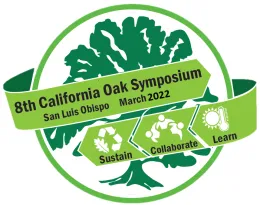#3

Survival and Growth of Blue Oaks Under Power Transmission Lines 10 Years After Tree Topping
Royce Larsen, University of California Cooperative Extension
Bill Tietje, University of California Cooperative Extension
Karl Striby, United States Department of Agriculture, Natural Resource Conservation Service
Steve Sinton, San Luis Obispo County Rancher
Kevin Jensen, United States Department of Agriculture, Agriculture Research Service
Blue oaks (Quercus douglasii) have been an important part of California’s ecosystems for millennia. It has been recognized for more than 100 years that California oaks in general are not adequately regenerating at a rate that will sustain populations. There are regeneration concerns for many areas within California oak woodlands and there are many reasons for alarm. Some important reasons for maintaining oak populations include the values that oaks provide for wildlife, carbon sequestration, erosion control, and maintaining view sheds. But at the same time, fire is a huge concern in California. Wildfires that start due to faulty power transmission lines have had much attention during the last decade. As a result, PG&E has been aggressively clearing trees under its lines. We started a study to evaluate tree survival and growth after PG&E first intended to cut down oaks under their power lines but was convinced to only top trees beneath their powerlines on a private ranch in 2012. There were 89 topped trees that we tagged, then measured the diameter at breast height (DBH) and the cut height in January of 2013. The average DBH was 10.1 inches (range 4.9 in. – 33.8 in.). The average cut height was 11.5 feet (range 6.0 ft. – 32.0 ft.). We found that 10% of the trees had died by 2022, while the remaining trees averaged 8.4 feet (range 0.0 ft. – 18.0 ft) of growth and looked healthy. We found no correlation with tree mortality or growth with DBH. Of the 10% of trees that died, 80% had an initial cut height of less than 8 feet. It is important to note two things: first that it may reasonably be assumed that none of the trees that would have been cut off at the base would have survived and second, that the mortality of 10% of the topped trees is low, especially given that there have been severe drought conditions since 2012.
